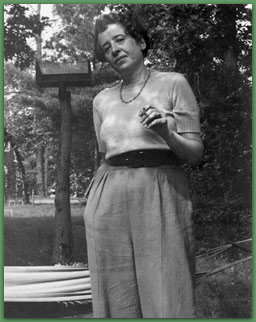“we will burn, we will burn together” or: Re-reading The Crucible now — reading Arthur Miller through Hannah Arendt
Continued from here, a series on re-reading The Crucible for the third time in light of Armitage’s appearance as John Proctor in London. Now a week away!
***
It was handy that this article appeared in the Sunday Times this morning. Thanks to all who found copies of it.
 Courtesy of did you make these bunnns? on tumblr. Full article scan at allthingsrarmitage
Courtesy of did you make these bunnns? on tumblr. Full article scan at allthingsrarmitage
***
I don’t care either way about a historicizing or non-historicizing production of The Crucible — although to me a historicizing production involves greater risks with suspension of disbelief than if they just played it without context at all; then again, it’s so obvious that the work is not an accurate recreation of late-seventeenth-century Puritan Massachusetts after about three pages that one has to give up on this point or stop anyhow.
But. What I like about Farber’s remarks, is her point that the real parallel that The Crucible should draw out for the reader who’s not immersed in the history and dynamics of McCarthyism is not to “witch hunting” or even show trials in democracies like the HUAC trials, but the problems of modern totalitarianism(s) and the issue of genocide and other forms of state-sponsored violence as a phenomenon of all modern states.
A little background — what exactly is the contrast that Yael Farber is drawing?
 [Left: George Orwell, author of Animal Fair and 1984, in 1943. Source.]
[Left: George Orwell, author of Animal Fair and 1984, in 1943. Source.]
In the first third of the twentieth century, communism (shorthand: the U.S.S.R.) and fascism (shorthand: Spain after 1939, Germany after 1933, Italy after 1924) were thought to be separate phenomena. The difference to our own views of the international political constellation back then is striking; this contrast always puts me in mind of George Orwell’s maxim that the biggest threat to socialism was not communism but fascism — but when I tell my students this, they say: Orwell was a socialist? Though the first uses of the term “totalitarian” stem from the 1920s, the concept as a term for a single-ideology state that demands total loyalty (and a corresponding resignation of individuality) from its citizens became popular towards the end of WWII. “Totalitarian” as a term that described both communist and fascist states was used in contrast to liberal democracies, which were said not to embody this “total” devotion to a particular single political ideal, but instead allowed for a diversity of philosophical influences within a diverse politics.
If you read the play based on that contrast and think about McCarthyism, which occurred in the democratic United States (and assuming you’ve got allegiance of some stripe to a liberal democratic state or the ideas behind one), the witchcraft metaphor might make you inclined to think that it’s an isolated incident. That is to say, the state and society themselves are is soundly constituted, but this is just a horrific, out of character episode. McCarthyism is bad, but America is okay. McCarthyism is a perversion of politics, but U.S. politics are sound. In other words, in that sense, if the reader draws a strong parallel between the play and HUAC, The Crucible reads as a critique of a moment where a state/society persecutes “others” defined by their slippery potential associations with a practice or an idea — the description of a hysterical episode rather than a critique of society itself. The problem isn’t the system; it’s just a bad moment. This, incidentally, is the position of the scholar who wrote the introduction to the edition of the play I have: “Today, with the nightmare era of McCarthy moving farther into the past … “The Crucible” can be judged for what it is, a moving drama about the personal tragedy of the notorious Salem Trials which makes by implication an eloquent case on the universal subject of intolerance” [viii].
 [Right: Joseph McCarthy displays one of the infamous lists of Communists in government in 1950. Source.]
[Right: Joseph McCarthy displays one of the infamous lists of Communists in government in 1950. Source.]
But Farber is interpreting the play to be saying “[w]e’re all Salem.” Now, she could just be saying “all human societies are Salem,” and if she is, that is unfortunate, but I think her other twentieth-century cultural references give us a context for understanding her remark. Given her mention of a fascism, a genocide in a developing democracy, and a democracy governed by a military junta and challenged by a rebel insurgency, I think she is saying something about modernity. This a more sophisticated read of the play than I think a lot of readers may come to initially, particularly those critics in the 50s who saw quite exactly all the ways in which witchcraft accusations were a poor or even distracting parallel to the Red Scare, and any reader who may tend to see the victims and persecutors of the play as differentiated in really stark terms. For instance, if you reread the beginning, the play starts with a scene in which Parris is reasonably sympathetic and John Proctor is an obstinate jerk, but it’s hard for (at least U.S.) audiences to come to any depiction of this episode with much sympathy for the persecutors — we’ve all been taught how unreasonably religious the Puritans were, what an unjust scandal the witch trials at Salem were, and how their victims died martyrs’ deaths.
 [Left: Hannah Arendt in 1950. Source.]
[Left: Hannah Arendt in 1950. Source.]
But if “[w]e’re all Salem,” if McCarthyism isn’t just a bad moment, but a sort of characteristic pattern of interaction in modern states and societies, then the focus has to turn back toward what exactly the problem is with them. This theme was discussed heavily by Hannah Arendt at just about the time Miller was writing this play in Origins of Totalitarianism (1951), in which she argued inter alia that totalitarianism (both Nazism and Stalinism) resulted from the allegiance of citizens to movements hostile to the nation-state and which drew on themes of racism, nationalism, imperialism, bureaucracy, and propaganda / terror. On the one hand these movements were hostile to the sort of inalienable rights and guarantees of popular sovereignty that the state had made to citizens in the nineteenth century; on the other, when they gradually attracted the support of larger groups of voters so that they took over the state and changed its prerogatives, these movements obviously had the massive powers of the state that claimed to act at the behest of and for the benefit of the people in their hands. In totalitarianism, state and society become coterminous. Citizens are turned into masses mobilized for the goals of the totalitarian ideology, and potential for real revolt is eliminated — the only option is for the subject to shrug and try to insulate himself from the ideology by retreating into private life. In the totalitarian world, however, the line between private and public is erased, so that no purely personal matter is exempt from being read as politically significant. This enforcement of law via the terror of loss of the private sphere comes to be seen by most as rational.
The conclusions of this work have held up better from the standpoint of political philosophy than from that of historical scholarship, but it’s still an insightful read of what Arendt sees as happening in modern societies. She extended this theme in her controversial work, Eichmann in Jerusalem: A Report on the Banality of Evil (1963), which pointed out both the entirely boring qualities of Eichmann, who masterminded the train system that brought Jews to concentration camps, and the complicity of the Jews in organizing their fellows for transport. She was often accused of victim-blaming in the years after the work appeared, and she surely exaggerated the failure of the Jews to resist. Even so, I take her point to be not that the Jews were guilty, but that there is something so compelling about the modern state that claims to act on behalf of the people that even its victims play a role, against their own conviction, in their destruction, that this happens even when the machinery of the state falls into the hands of forces hostile to it. In other words, on some level, Arendt’s later work takes up the hint in Origins of Totalitarianism that important qualities of fascism and communism as totalitarian are shared, under particular circumstances, with liberal democracies. (I can’t stop myself from mentioning that if you’re a fan of Alexis de Toqueville, you’ll remember that he pointed to the possibility of this problem in Democracy in America more than a century earlier; but his solution to the problem was the voluntary associations, which mediated and presented obstacles between state and society.)
 Now, the concession — in all of his initial statements, including his notes that are part of the script for the play — Arthur Miller emphasized that the parallel he was drawing was between the atmosphere that gave rise to the Salem witchtrials and the cultural mood that spawned McCarthyism. He never drew the parallel to the possibility of The Crucible as a commentary on the theme of totalitarianism, and the term was hardly in common use when he was writing the play. I do find it interesting that Christopher Bigsby notes a few times that Miller himself had come over the Arendtian position (Arthur Miller, vol 1, pp. 365, 462) without saying much more about that. And I know it is not appetizing for many readers to drawn any kind of parallel between states and societies that we commonly accept as totalitarian and liberal democracies like the United States.
Now, the concession — in all of his initial statements, including his notes that are part of the script for the play — Arthur Miller emphasized that the parallel he was drawing was between the atmosphere that gave rise to the Salem witchtrials and the cultural mood that spawned McCarthyism. He never drew the parallel to the possibility of The Crucible as a commentary on the theme of totalitarianism, and the term was hardly in common use when he was writing the play. I do find it interesting that Christopher Bigsby notes a few times that Miller himself had come over the Arendtian position (Arthur Miller, vol 1, pp. 365, 462) without saying much more about that. And I know it is not appetizing for many readers to drawn any kind of parallel between states and societies that we commonly accept as totalitarian and liberal democracies like the United States.
But Farber’s remarks about how she understands the work stands, and perhaps the length of my discussion about events in Salem as an example of social disciplining might give readers a clue about how spot-on I feel such a reading of the play could be.
First, structurally — In Miller’s play, we have an authority in which the coercive institutions of the state, while not co-extensive with the society, are largely congruent with them: political authority obeyed the commands of the voters, who were Puritans (Proctor refers to this relationship in the first scene). The state and the church, which constituted the society, are largely coterminous (we see that the judges and the pastors are the same people). We also have a single ideology; as I noted, accusers and accused stood in the same relationship to a shared belief system (while people disagree about the emphases of the religion, with Proctor saying he wished Parris would preach more about G-d and less about punishment, they nonetheless share multiple common assumptions). In this setting, a dispute over any matter, conscious or unconscious, arises (girls have been spotted in the forest dancing and conjuring; then some of the girls suddenly appear to be possessed and it’s not clear what to do about it), because society and political authority are the same, the challenge is presented in terms of absolute evil. In response, the tendency will be to resort to the ideology as a means of dealing with the problem (their illness is attributed to demonic possession and hence to maleficium) and the resolution of the dispute will reinforce the ideology (those who ask questions about the interpretation of witchcraft or refuse to cooperate in sustaining the solution to the problem proposed are accused of witchcraft, confess eventually, and are killed, which both proves the truth of the accusations and enforces the power of the ideology).
 And then, personally — this conflict plays itself out in the lives of two groups of people. First, the young women, who are socially marginalized and have no means for turning events to their benefit except by manipulation, so that their scheming to avoid punishment for some they did in their free time turns into a religious and society crusade. Abigail Williams on Miller’s reading sees herself as having no option but somehow tempting her way into Proctor’s bed and then (his wife eventually dead) into a marriage with him. And Proctor, who falls out of compliance with the ideology by sleeping with Abigail (perhaps because he finds his wife’s representation of it so cold) is trapped — when he points out Abigail’s attempts to sabotage his position, he learns that the private sphere in which he thought his affair with her was taking place is indeed an ideological sphere in which he must become a victim. In the end, then, his decision to go to the scaffold is ambiguous. On the one hand, he proclaims it his decision and sees it as a way of regaining his name; on the other, however, his death fully serves the needs of the ideology for reinforcement. Proctor is thus the ultimate in terms of the ideal totalitarian victim, for no matter how he makes his end, it serves the ideology he believes himself to be challenging. His private decisionmaking capacity is totally erased by the society in which he lives, even as he believes himself to be choosing.
And then, personally — this conflict plays itself out in the lives of two groups of people. First, the young women, who are socially marginalized and have no means for turning events to their benefit except by manipulation, so that their scheming to avoid punishment for some they did in their free time turns into a religious and society crusade. Abigail Williams on Miller’s reading sees herself as having no option but somehow tempting her way into Proctor’s bed and then (his wife eventually dead) into a marriage with him. And Proctor, who falls out of compliance with the ideology by sleeping with Abigail (perhaps because he finds his wife’s representation of it so cold) is trapped — when he points out Abigail’s attempts to sabotage his position, he learns that the private sphere in which he thought his affair with her was taking place is indeed an ideological sphere in which he must become a victim. In the end, then, his decision to go to the scaffold is ambiguous. On the one hand, he proclaims it his decision and sees it as a way of regaining his name; on the other, however, his death fully serves the needs of the ideology for reinforcement. Proctor is thus the ultimate in terms of the ideal totalitarian victim, for no matter how he makes his end, it serves the ideology he believes himself to be challenging. His private decisionmaking capacity is totally erased by the society in which he lives, even as he believes himself to be choosing.
We’re almost to the beginning of previews, and I don’t know how much more I want to write about background to play I will never see, but the personal level of the play, the triangle between the Proctors and Abigail Williams, probably deserves more attention, and if I do write another post on this topic that theme will be high on the agenda.





I find all this additional information you bring out fascinating. There is no way I’d even begin to dive this deep into it and I appreciate your doing so. Thank you.
LikeLike
you’re welcome, and thanks!
LikeLike
Fascinating perspective, especially re: below –
“In the totalitarian world, however, the line between private and public is erased, so that no purely personal matter is exempt from being read as politically significant. This enforcement of law via the terror of loss of the private sphere comes to be seen by most as rational.”
And:
“when he {Proctor}points out Abigail’s attempts to sabotage his position, he learns that the private sphere in which he thought his affair with her was taking place is indeed an ideological sphere in which he must become a victim.”
Scary as well as fascinating…. well worth exploring further. Thanks for sharing with us.
LikeLike
Thanks. I think this is one thing that connects the kinds of discussions we had about this in HS (with some kids saying, well, if he hadn’t slept with her, he wouldn’t be having this problem, would he? essentially a social disciplining conversation) with the kind of thing I thought Farber was saying (modern societies experience certain kinds of politics in which there is no free space for the individual).
LikeLike
[…] from here, a series of reflections on re-reading The Crucible in the wake of Richard Armitage’s casting […]
LikeLike
“we will burn, we will burn together” or: Re-reading The Crucible now — John Proctor, cruelty and betrayals | Me + Richard Armitage said this on June 20, 2014 at 4:26 am |
[…] and as I said at length, I agree that Miller's reading of events of the 1950s was facile — and have learned since that […]
LikeLike
Review of The Crucible from Flick Philosopher | Me + Richard Armitage said this on July 15, 2014 at 5:50 pm |
[…] their own lifetimes. And after four centuries, I hope we can understand a bit better about how incidents like this function as the consequence of a closed system in which accuser and accused both play predetermined roles. Moreover, I don’t think Salem can […]
LikeLike
The Crucible, Salem history and gruesome anniversaries | Me + Richard Armitage said this on July 19, 2014 at 11:39 pm |
[…] long quotation of Yael Farber’s position on the potential political significance of the play. As I wrote this summer before I saw Farber’s production, Miller seems to be saying something a…. I found Farber’s remark exciting, although neither she nor Delamere appear to be aware of […]
LikeLike
Filmed theater, staging in the round, the omniscient viewer, and The Crucible on video | Me + Richard Armitage said this on November 29, 2014 at 6:03 am |
[…] Miller’s obligation to seek to understand either of these things, since, seen historically, The Crucible is a play about HUAC, the “red scare,” and state disciplining processes in …, and not really about Salem, which serves as a symbol for what Miller really wanted to discuss and […]
LikeLike
Religion, superstition, piety, belief: me + adrian schiller in The Crucible | Me + Richard Armitage said this on February 16, 2015 at 8:36 am |
[…] as a text we read in U.S. high school classrooms, as a commentary on Salem and witchhunting, as a commentary on twentieth-century politics and McCarthyism, and as a commentary on personal […]
LikeLike
Nipple, nipple, nipple! I’ve been informed that I’m not taking The Crucible on screen seriously enough | Me + Richard Armitage said this on March 21, 2015 at 7:13 pm |